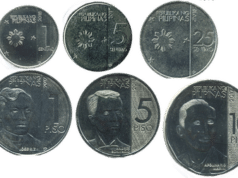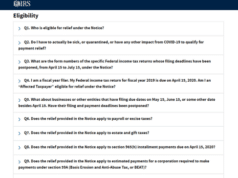
The inflation rate is an important metric that is relevant to most people. The inflation rate is calculated using a Consumer Price Index (CPI), which represents the price index of a basket of goods and services. The inflation rate is the percentage change in the CPI over a certain period of time. Usually, the inflation rate is calculated on a year-over-year basis. The inflation rate is an important metric that is used and analyzed by many businesses, investors and individuals. Inflation provides an insight into the purchasing power of a dollar. As a rule of thumb, when inflation increases, the purchasing power of a dollar decreases. The US inflation calculator can help an individual to see how inflation can deteriorate the value of a dollar over time. For example, a basket of products worth $100 in 1890 would cost around $3,665 today. This means that the US dollar has lost 97% of its purchasing power over 132 years.
The United States tries to keep inflation stable through the Federal Reserve and the tools they have. One of the goals of the Federal Reserve is to keep long-term inflation stable at an average rate of 2%. This means that even though the inflation rate may deviate, the Federal Reserve uses its tools to keep an average target inflation rate at 2%.
As of January 2022, the inflation rate in the US has seen a significant increase to 7.5%. This rate is the highest since February 1982. Such a high inflation rate is due to numerous factors affecting the US economy at the moment. Some of these factors may contribute to inflation more than others. Some of them may also be temporary, which means that the inflationary pressure of these factors will decrease over time, which will lead to a lower inflation rate.
COVID-19 And The Federal Reserve
One of the most contributing factors to the current rate of inflation is the response of the government to the pandemic and lockdowns. Many people found themselves jobless when the lockdowns and other capacity restrictions were implemented in the US. The US government responded to the decline in GDP by issuing large stimulus packages and easing monetary policy. The Federal Reserve conducted a large quantitative easing program as well as decreased overnight rates to effectively 0%. These actions led to abnormally high consumer and business spending during the pandemic.
It is important to note that the effects of a monetary policy change usually show themselves around 2 years after the implementation of the changes. This means that now is the time when the effects of easing monetary policy can be seen. Even though the actions of the US government took a large scale and definitely contributed to the inflation rate the US economy observes right now, it is not the only large contributor to the high inflation rate we see throughout all markets.
Energy And Oil Prices
Energy and oil prices have a direct effect on the prices of all the goods and services produced in an economy. In short, every single item requires transportation, so if the gas prices increase, the transportation costs are likely to increase as well, which may lead to a higher price for an item. The biggest contributors to an increase in CPI are energy and oil prices. As of January 2022, energy prices increased by 27% while gasoline prices increased by 40%. These two price increases contributed to an increase in the prices of many goods and services simply because it is now more expensive to produce the goods and services.
Rising oil prices are due to multiple reasons. The first reason is the fact that the oil supply is less than the oil demand. During the pandemic, demand for oil was not as high as before, so OPEC members chose to limit their oil supply to keep the prices high. When the restrictions eased and people started traveling again, the demand for oil increased while supply did not change. This led to an accelerating increase in oil prices. The USA tried to produce more oil to lower the inflationary pressure on the economy, but the global supply chain disruptions restricted them from supplying enough oil.
Supply Chain Disruptions
Many firms during the pandemic decreased their production or stopped producing at all. One of the clearest examples is the automobile industry that lowered its production during the pandemic. The producers of conductor chips, an important component of modern cars, had to supply their conductor chips elsewhere. When the production of cars started increasing, they found themselves short on the conductors while firms that produce them found other buyers. Because of the conductor shortage, the automobile industry does not produce enough cars to meet the demand. This shortage also led to a shortage in the secondary market for cars because people chose to buy used cars or keep their cars instead of buying a new car and selling the old one. As of January 2022, used cars have seen an increase in their price of around 40.5%.
These supply chain disruptions that came during the pandemic are still lingering around. This means that the firms are unable to produce and deliver enough goods to meet the demand. People argue how long it will take for supply chain issues to be resolved, but it is certain that the supply chain will normalize as long as no large shocks, like the pandemic, would not happen while the supply chain normalizes.
Cascading Effect On Inflation
These three factors separately contribute to a higher inflation rate in the US. What is more important is that they happen at the same time reinforcing each other. For example, supply chain disruptions make it difficult for oil prices to stabilize while high consumer spending due to government policies drives the demand for goods and services up. Because these events happen at the same time, a high inflation rate may be present for longer than expected, but it should lower over time as the problems get solved.
It is important to understand that other shocks in the economy may lead to more problems, so even though these effects of the factors discussed above will weaken over time, other factors may appear driving inflation up. There will always be unpredicted shocks happening to the economy without a clear roadmap on how to minimize their pressure on inflation, but using proper tools, the government can control the inflation rate to a certain extent. At the end of the day, not only decrease in supply drives prices up. An increase in demand may also contribute to higher prices, so one way to lower the inflationary pressure is to consume less as a society.








